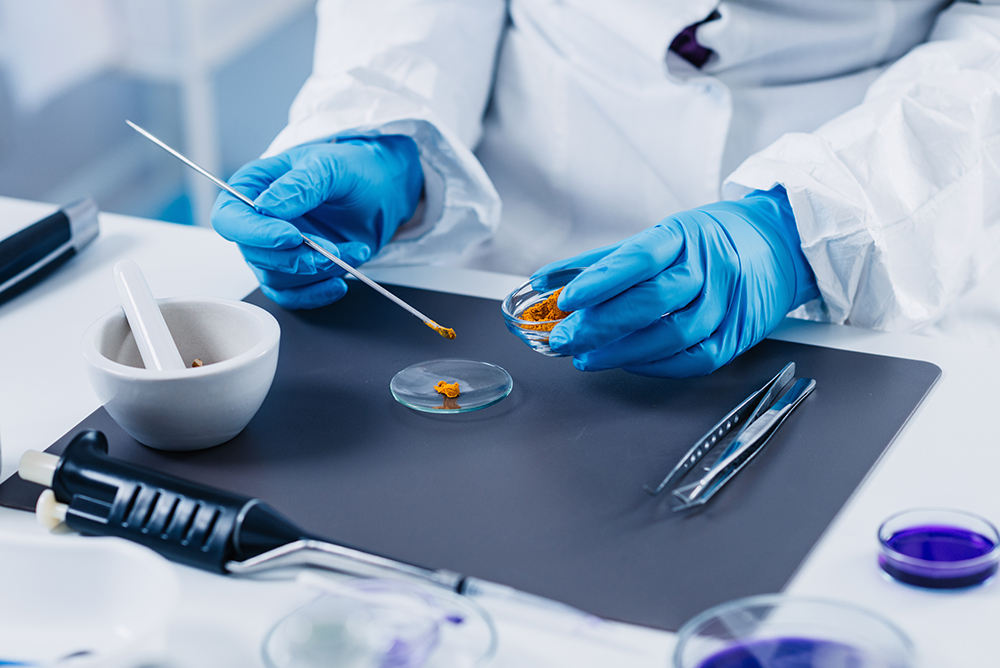Research in food technology, food quality, and food safety is as an indispensable task to support the evolution of the food industry, guarantee public nutrition and health, and alternatives to shifting dietary preferences and to satisfy the claims for more sustainable food options. Researchers in food technology pioneer innovative processes, preservation methods, and novel ingredients look to meet these evolving needs.
Making sure our food is good and safe is essential because it is the basis of public health and people trusting what they eat. Doing thorough research in these areas is key to finding possible problems, improving how we make sure food is good, and putting effective safety rules in place. Using fancy technologies, like really small tech and smart packaging, helps guide us in using these innovations responsibly in the food industry.
Our commitment to a green economy includes making sure our supply chains are safe and eco-friendly. Following strict safety rules and using advanced tech for tracking and transparency helps create honest and eco-conscious supply chains. Clever packaging technologies also help cut down on food waste and match the ideas of a circular economy.
The connected areas of food technology, food quality, and food safety play a big part in steering the food industry toward a future that is more eco-friendly, strong, and environmentally aware.
Research Topics
- Beneficial microorganisms in agriculture, waste valorisation
- Application of beneficial microorganisms in agriculture; improving soil health and fertility; biological control
- Soil and plant microbiome; dough microbiome
- Plant growth promoting bacteria (PGPB) interactions in the soil-microorganism-plant system
- Food waste composting
- Bioprocesses for sustainable water management and reuse in foods production by agriculture
- Production, separation, and purification of biomolecules
- Circular Bio-Economy in agrifood value-chains and waste valorisation
- Functional Genomics; Comparative Genomics
- Food packaging; shelf life assessment; by-products valorisation; food innovation; food waste prevention; novel processing technologies
- Fermentations
- Meat maturation
- Application of membrane technologies for valorisation of dairy by-products
- Reduction of energy consumption in dairy processing
- Development of new formulations for traditional meat products
- Reduction of additives and preservatives in meat
- Incorporation of seaweeds in food and concentration/separation of valuable compounds
- Insects for food and feed
- Processing of legumes for plant-based alternatives
- Increasing the value chain for high-quality local foods
- Innovation in plant-based products (foods and beverages) for human consumption
- Spray drying at low and high temperatures; spray drying of sugar-rich materials
- Detailed analysis of physical properties of food powders
- Non-thermal technologies (PEF, pulsed electric field treatment, US ultrasound treatment)
- Different methods of drying (convective, infrared-convective, vacuum, microwave-convective, microwave-vacuum, convective-ultrasound, convective-infrared-ultrasound, lyophilization)
- Isolation of yeast protein preparation
- Designing analogues of meat products; use of 3D printing in creating the structure of plant analogues
- Combination of vegetable and yeast proteins to obtain products with better properties
- Detailed analysis of physical properties of edible films (barrier, mechanical, optical, sorption, wetting, antioxidant, thermal properties); microstructure and FT-IR
- Freeze-drying, fermentation, homogenization, physical properties of droughts, emulsion analysis, powder analysis
- Valuable food industry waste as components of innovative products
- Freeze-drying as a method to improve the quality of products obtained with the addition of food waste
- Investigations of the physical properties of food products with food waste
- Evaluation of sterol content and its transformation during food processing
- Biosynthesis, isolation, fractionation, and characterization of yeast-origin cell wall polysaccharides, glycoproteins, proteins, lipids
- Microencapsulation of volatile substances
- Analysis of volatile compounds
- Chemical analysis of bioactive compounds
- Providing evidence of probiotic and prebiotic properties of bacteria and novel substances
- Effects of silver nanoparticles on the nervous system (in vivo study)
- Effects of nanoplastic on the gut-brain axis (in vivo study)
- Effects of oat beta-glucan in the gastrointestinal tract under conditions of induced inflammation and colon cancer (in vivo study)
- Effects of silver nanoparticles on the reproductive system (in vivo study)
- Shelf life testing, monitoring of manufacturing process, detection of freshness, examine authenticity
- Sensory perception, acceptance, emotional responses, measuring dynamics of perception, measuring well-being
- Eye Tracking in packaging and label design
- Conducting risk assessment
JRC 3 Coordinator : Rui Costa (Polytechnic University of Coimbra).

